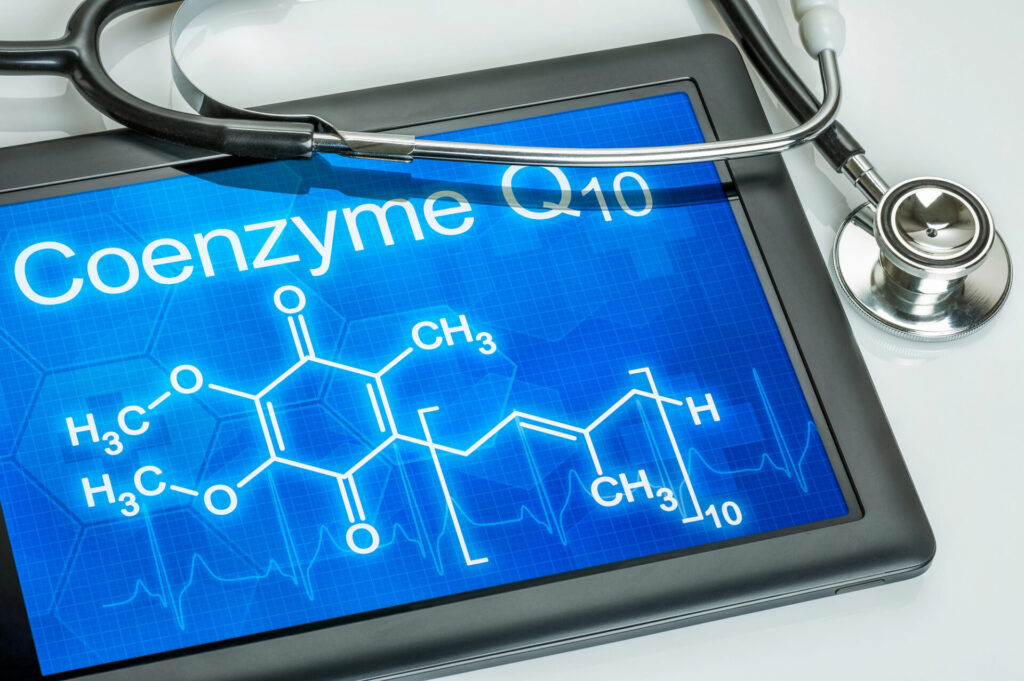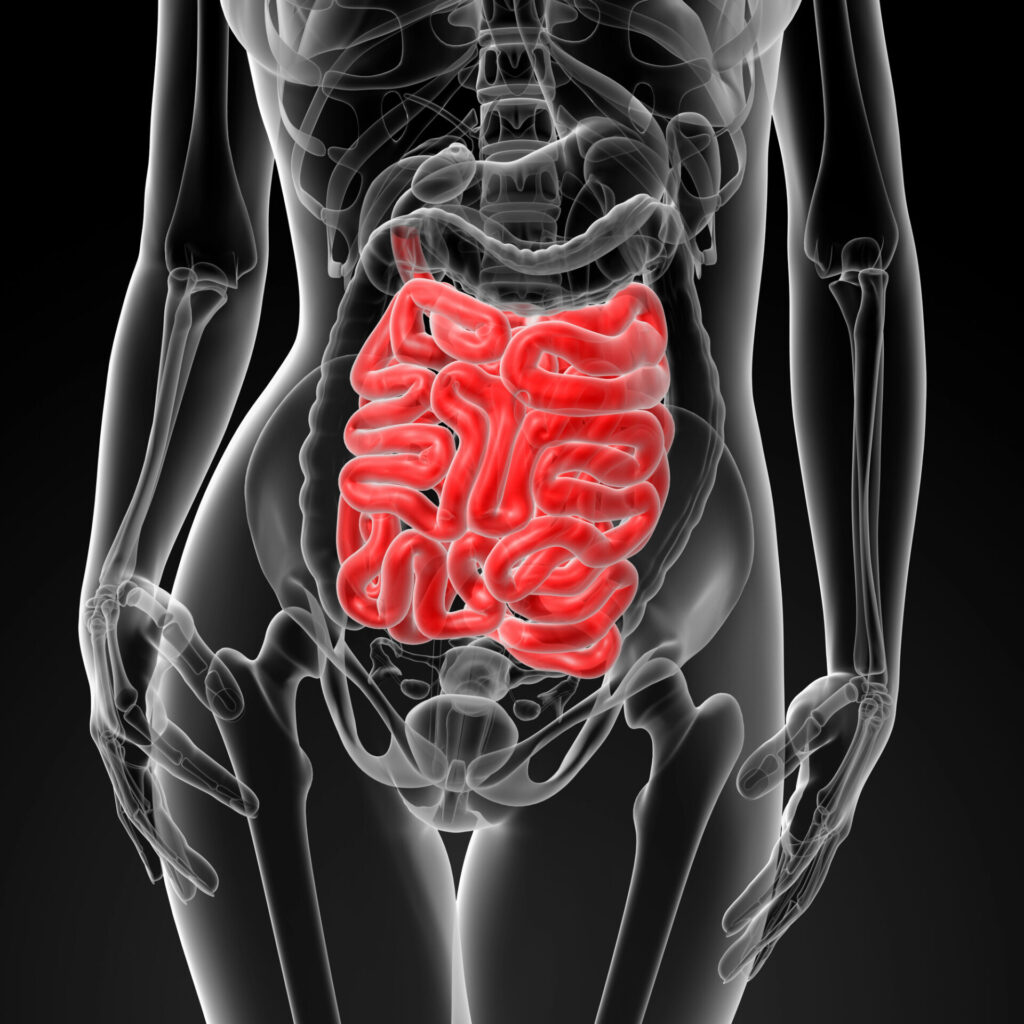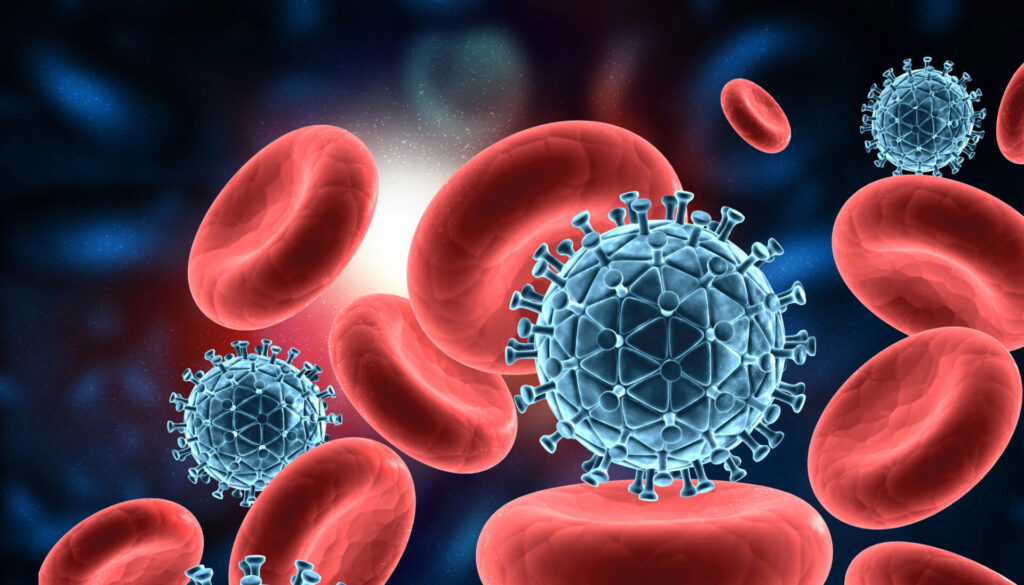Coenzyme Q10 (CoQ10) is one of the most important supplements we recommend for our patients. It governs a vast expanse of health-related issues due to its ability to recharge the mitochondria. CoQ10 is found in nearly all cell membranes, including mitochondrial membranes. Consequently, it’s used to support cardiovascular and neurological health as well as healthy aging.
The challenge is that most CoQ10 supplements are not well-absorbed. Furthermore, they need to be taken with a fatty meal for optimal absorption. As I like to tell my patients, “The most expensive supplement that an individual can take is one you need, yet is not absorbing.”
This article will discuss factors that can cause patients to experience low CoQ10 levels and how a supplement that uses a state-of-the-art VESIsorb® technology significantly improves bioavailability of this critical nutrient.
CoQ10’s Important Role in Health
Coenzyme Q10 is a fat-soluble nutrient that is produced in the body and can also be obtained from diet or supplements. CoQ10 plays an important part in mitochondrial oxidative phosphorylation and the generation of the body’s primary source of fuel, adenosine triphosphate (ATP).1 It acts as an antioxidant. In order for carbohydrates and fats to be converted into ATP, CoQ10 must be present in the inner mitochondrial membrane.
There are two forms of CoQ10: ubiquinone and ubiquinol (the active form). The body must convert ubiquinone to ubiquinol, but sometimes this is easier said than done. Younger people can usually perform this conversion efficiently, but in older people the process becomes less efficient due to stress from diseases and other factors. Taking ubiquinol as a supplement is one solution, but ubiquinol is not absorbed very well and needs to be taken with a fatty meal.
What Causes CoQ10 Deficiency in Patients?
A number of factors cause CoQ10 levels of decline. These include:
- Aging – CoQ10 levels decline gradually with age in a number of different tissues.2
- Diabetes, Cancer, Congestive Heart Failure – Individuals with these disorders have been found to have decreased plasma levels of CoQ10.3
- Certain Medications – Certain pharmaceutical drugs are known to cause a decline in CoQ10 levels. These include:
- Statin drugs – Lipid-lowering drugs such as simvastatin (Zocor), pravastatin (Pravachol), lovastatin (Mevacor, Altocor, Altoprev), rosuvastatin (Crestor), and atorvastatin (Lipitor) have been shown to cause a drop in circulating CoQ10 levels.4-7 Statins inhibit the HMG-CoA reductase enzyme, which plays an important part in a reaction shared by both cholesterol and CoQ10.
- Beta blockers, ACE inhibitors, Calcium Channel Blockers, Diuretics – Many antihypertensive medications can deplete CoQ10 levels.8
- Mental health medications – Doxepin, amitriptyline, haloperidol, and phenothiazines are some of the CoQ10-lowering medications used to treat mental health disorders.9-11
Low Bioavailability of CoQ10 Only Makes Matters Worse
Most CoQ10 supplements are known for their poor bioavailability and they must be taken with a high-fat meal for increased effectiveness. CoQ10 has very low aqueous solubility and a relatively high molecular weight, meaning it’s poorly absorbed after oral administration. What can be done to assist patients?
Boosting Blood Plasma Levels of CoQ10
VESIsorb® Technology allows patients to increase their plasma levels of CoQ10 at a much lower dose and without worrying about taking it with a high-fat meal.
A cross-over pharmacokinetic pilot study using a single oral dose in humans compared standard ubiquinol to ubiquinol employing the VESIsorb® delivery system. The VESIsorb® formulation resulted in a 698% boost in peak blood levels of ubiquinol. Furthermore, there was a 485% increase in the relative bioavailability of ubiquinol when using the VESIsorb® technology as indicated by area under the curve (AUC).
Comparing the bioavailability of a VESIsorb® CoQ10 formulation with 3 other commercially available CoQ10 products.12 The double-blind, controlled study included 20 healthy male and female subjects who took a single-dose (120 mg) of CoQ10. Plasma concentration of CoQ10 was measured at baseline and at intervals after administration over 24 hours. The VESIsorb® CoQ10 led to the highest plasma concentration levels after 1 hour and continued to increase for 4 hours. The concentration of VESIsorb® CoQ10 remained well above the levels of the 3 other products throughout the 24-hour period.

FROM THE SPONSOR:
TruGen3 has formulated VESInol-QH using the VESIsorb® Technology for superior bioavailability, Benefiting:
- More rapid absorption, even when taken on an empty stomach or without high-fat food.
- A lower dose is required to address concerns like poor absorption with age, diet, and gender.
- Smaller and easier to swallow capsules.
The bottom line? Vesinol-QH powered by VESIsorb® is an excellent choice to raise CoQ10 levels in patients.
References
- Acosta MJ, Vazquez Fonseca L, Desbats MA, et al. Coenzyme Q biosynthesis in health and disease. Biochim Biophys Acta. 2016;1857(8):1079-1085.
- Ernster L, Dallner G. Biochemical, physiological and medical aspects of ubiquinone function. Biochim Biophys Acta. 1995;1271(1):195-204.
- Garrido-Maraver J, Cordero MD, Oropesa-Ávila M, et al. Coenzyme q10 therapy. Mol Syndromol. 2014;5(3-4):187-197.
- Folkers K, Langsjoen P, Willis R, et al. Lovastatin decreases coenzyme Q levels in humans. Proc Natl Acad Sci U S A. 1990;87(22):8931-8934.
- Mabuchi H, Higashikata T, Kawashiri M, et al. Reduction of serum ubiquinol-10 and ubiquinone-10 levels by atorvastatin in hypercholesterolemic patients. J Atheroscler Thromb. 2005;12(2):111-119.
- Bargossi AM, Battino M, Gaddi A, et al. Exogenous CoQ10 preserves plasma ubiquinone levels in patients treated with 3-hydroxy-3-methylglutaryl coenzyme A reductase inhibitors. Int J Clin Lab Res. 1994;24(3):171-176.
- Ghirlanda G, Oradei A, Manto A, et al. Evidence of plasma CoQ10-lowering effect by HMG-CoA reductase inhibitors: a double-blind, placebo-controlled study. J Clin Pharmacol. 1993;33(3):226-229.
- Health Library. Lima Memorial Health Systems. https://www.limamemorial.org/m/health-library/Complementary%20and%20Alternative%20Medicine/33/000203. Published 2016. Accessed May 8, 2025.
- Moreno-Fernández AM, Cordero MD, Garrido-Maraver J, et al. Oral treatment with amitriptyline induces coenzyme Q deficiency and oxidative stress in psychiatric patients. J Psychiatr Res. 2012;46(3):341-345.
- Balijepalli S, Boyd MR, Ravindranath V. Inhibition of mitochondrial complex I by haloperidol: the role of thiol oxidation. Neuropharmacology. 1999;38(4):567-577.
- Burkhardt C, Kelly JP, Lim YH, Filley CM, Parker WD, Jr. Neuroleptic medications inhibit complex I of the electron transport chain. Ann Neurol. 1993;33(5):512-517.
- Liu ZX, Artmann C. Relative bioavailability comparison of different coenzyme Q10 formulations with a novel delivery system. Altern Ther Health Med. 2009;15(2):42-46.







